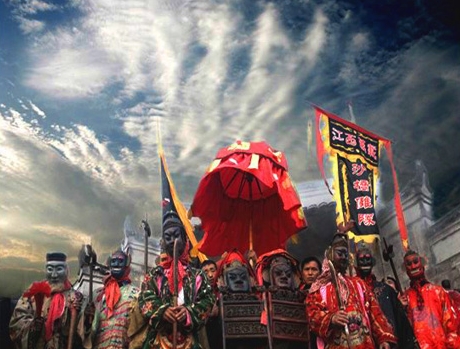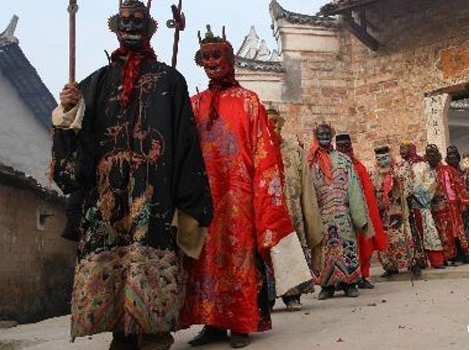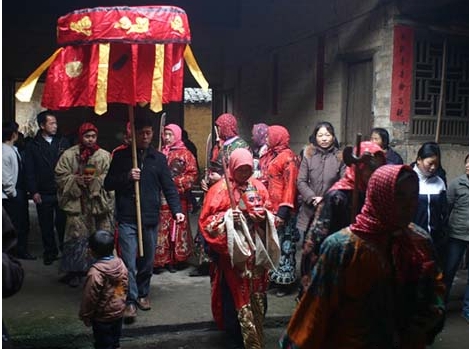
As an ancient custom, Nuo basically means greeting the god to exorcize the ghost of pestilence. Nuo dance refers to the dance performed at grand Nuo ceremonies. With a long history, it can be dated back to the record of "folk Nuo" in The Analects of Confucius. Nuo dance has been recognized as the living fossil in the dance history. Nuo dance of Wanzai County originated in the Yuan Dynasty and prospered in the early Ming Dynasty. It is mainly popular in Tanbu and Zhutan Towns where the Hakkas live. Until now, the original local flavor still remains in Nuo dance.

Nuo dance of Wanzai is also called Dancing Elves and Moving the Table (as the god in Nuo dance refers to that on the table). In addition to exorcizing and catching the ghost, the performance is also intended to pray for prosperity, security, longevity, harvests, elimination of pestilence and a growing population. There are 24 performers, and all of them wear masks and ancient costumes. All of the masks are made of exquisitely-engraved camphor wood. Besides, all have to be consecrated by shamans of Huashan Denomination, known as "open light." "Open light" means that the god of Nuo recruits generals and soldiers from the afterworld so that he will have the power to exorcize the evil.

Nuo dance of Wanzai has been passed down all the way until today. It has been very popular for generations. Before the performance starts, the god of Nuo has to be invited from his temple, which is known as "out of the table." On every New Year's Eve, the front door of the temple will be wide open. Candles will be burned, firecrackers set off, and drums loudly beaten. The leader of the ceremony will carry the Buddha statue out of the shrine, wash the face with clean water and dress it with a new hat. Afterwards, the Buddha statue will be placed in an armchair and then put it back on the incense table in front of the shrine. One day later, namely, on the 2nd day of the 1st lunar month, the dancing team will carry the Nuo god to every village and the neighboring counties. Musical instruments will be played along the road.





